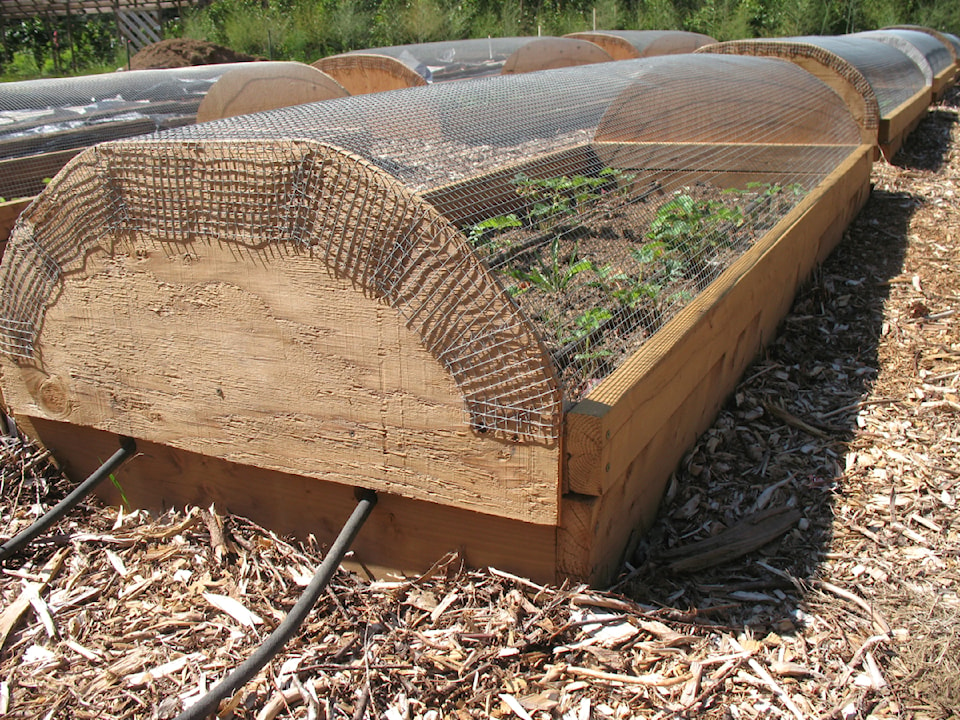Some crops are harder to grow than others. I would be tempted to suggest that the degree of difficulty increases with desirability were it not for raspberries. Raspberries seem to grow themselves. We just provide them with support, good soil and water and are rewarded with buckets full every year. Bees love them, but birds and rabbits leave them alone. I caught a bumblebee actually sleeping on a raspberry flower in the early morning and suspect they live in the stalks. Raspberries are like a child who erupts from the womb reading, writing and employed.
Strawberries, on the other hand, are demanding and needy. Bees love them, too, but so do birds, rabbits, raccoons and seemingly every other variety of vermin in the known universe. When I first started seriously growing them, birds got at my plants and ate at least part of every berry, so the next year I protected the entire bed with a spun cloth cover that Stellar's jays poked holes through and smaller birds muscled through to join the banquet. Our cat then clawed her way through in a vain pursuit that ended with her entangled in the shredded remnants of Remay like a fly awaiting the spider’s return.
Obviously stronger measures were required. I tried covering them with heavy netting but they still managed to find entrances and chow down before chirping impatiently for release. I was tempted to see what strawberry fed robins taste like until I remembered they also eat worms, so I delegated the problem solving to David. After all, infrastructure is his department. Besides, he loves strawberries.
After scribbling several pages of heavily annotated diagrams, David retired to the barn. The whine and howl of various power tools went on for a number of hours, after which he emerged with a wood and wire cage he confidently expected to repel airborne attacks. It probably would have, if rabbits had not tunnelled underneath and the birds had not used the holes for access.
Not one to take defeat lightly, David started this spring by making fresh beds, rototilling a section of land where I had cover crop growing for the past three years. Normally I avoid rototilling because it kills soil life and brings up millions of weed seeds, but this cover crop was prohibitively dense and would have taken someone far more robust and determined than me to dig up. Besides, once I get David started it is hard to get him to change direction.
Over the freshly turned soil he built 12 raised eight by three foot beds, using pressure treated two by eights with half inch wire mesh stapled to the bottoms, drilling holes in both ends to thread soaker hoses through. As I write he is making new cages to fit snugly on top of each frame. He assures me the next year we will not have to share our strawberries with Mother Nature’s Luftwaffe.
Given the expenditure of time, effort and materiel, I hope his confidence is justified. I have amended the beds accordingly, spreading a quarter inch layer of compost and sprinklings of organic fertilizer at the rate of four litres per hundred square feet. I wanted each plant to get a good start so I dug four inch deep holes, put a third of a cup of organic fertilizer in each hole and dug that in, not hitting the mesh, filled the hole with water and planted the seedlings. The strawberry roots should pass through the mesh into the ground below.
I devoutly hope this works as planned, because David has been researching the London blitz and muttering about flak emplacement and barrage balloons. Did I mention how much he loves fresh strawberries?
Please contact mary_lowther@yahoo.ca with questions and suggestions since I need all the help I can get.
